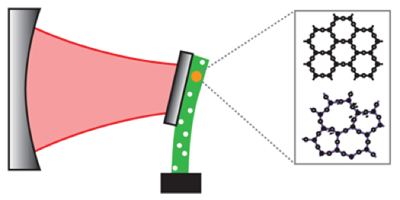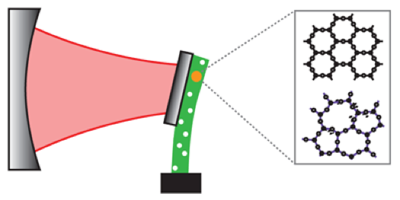Desirable Defects
Researchers can slow and stop the motion of a mechanical resonator with radiation pressure in an optical cavity. Cavity optomechanics of this sort has progressed rapidly, with various nanostructures “cooled” to states with only a few mechanical quanta (phonons). However, the optomechanical interaction is not yet strong enough to allow for dynamics at the single phonon level to be observed experimentally. Reaching the regime where the radiation pressure of a single photon is sufficient to displace the mechanical oscillator by more than its zero point motion may enable nonclassical states that contain precisely a definite number of mechanical quanta. These states could be useful for quantum metrology or for probing the interface between classical physics and quantum mechanics.
Writing in Physical Review Letters, Tomás Ramos at the University of Innsbruck, in Austria, and colleagues propose a different approach: rather than increase the optomechanical coupling, let the phonons interact with strain-sensitive defects in the mechanical resonator material to modify the motion. For single-phonon states, the harmonic mechanical oscillator must be coupled to a nonlinearity so that the hybrid energy levels become unequally spaced. Driving different transitions of the hybrid system would put the mechanical oscillator in a desired nonclassical state.
Nanoresonator materials naturally contain defects exhibiting atom tunneling between different conformations with a rate that depends on the strain in the material. Because the strain is modulated by the phonons, the mechanical resonator and the defect are directly coupled. Ramos et al. consider different resonator geometries and find that the phonon-defect coupling renders the mechanical oscillator nonlinear. In addition, they have shown that the defect’s presence can be observed in light exiting the opto-mechanical system. – David Voss





